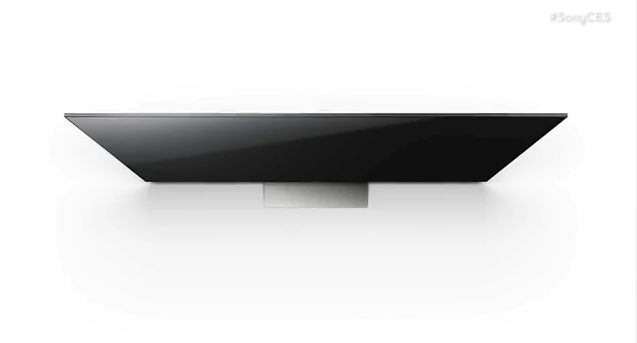Sony joins the 4K HDR TV fray with three thin screens

HDR has taken over TVs at CES 2016, and Sony is the latest to announce some of its screens are embracing the new standard.
The company's forthcoming 4K Bravia's - the XBR-X930D, XBR-X940D and XBR-X850D series - are going HDR. Thanks to the standard, the TVs will produce higher brightness, higher contrast and more vibrant colors, Sony said.
The new Bravias have a range of sizes within the each series. The bottom-tier XBR-X850D will have 55", 65", 75" and 85" models, the XBR-X930D a 55" and 65" model, and the XBR-X940D is available at 75 inches.
The flagship XBR-X930D also features a new backlight technology Sony's calling Slim Backlight Drive. It, along with its Dynamic Range PRO tech, will increase and decrease backlight to achieve deeper blacks and highlights that pop off the screen. A special grid array local dimming backlighting structure lets the source of the backlight target specific zones of the screen, which in turn keeps the screen thin.
The TVs, which are compatible with Android TV, are also incredibly thin thanks to a new design that puts the wiring flush inside the walls of the screen, rather than having a thin design that widens at the base, as seen in previous Bravias.
Now you know
Going forward, Sony TVs that are HDR capable will be labeled with a "4K HDR Ultra HD" logo so it's clear what the screens are capable of.
As for 4K HDR content, Sony's thought of that, too.
Sign up for breaking news, reviews, opinion, top tech deals, and more.
A new app from Sony Pictures Home Entertainment, will land in the US later this year. Called ULTRA, it lets consumers purchase and stream 4K HDR movies and TV shows selected from the Sony Pictures lineup. The app will stream the content straight to their Sony 4K HDR TV.
- More from CES 2016

Michelle was previously a news editor at TechRadar, leading consumer tech news and reviews. Michelle is now a Content Strategist at Facebook. A versatile, highly effective content writer and skilled editor with a keen eye for detail, Michelle is a collaborative problem solver and covered everything from smartwatches and microprocessors to VR and self-driving cars.